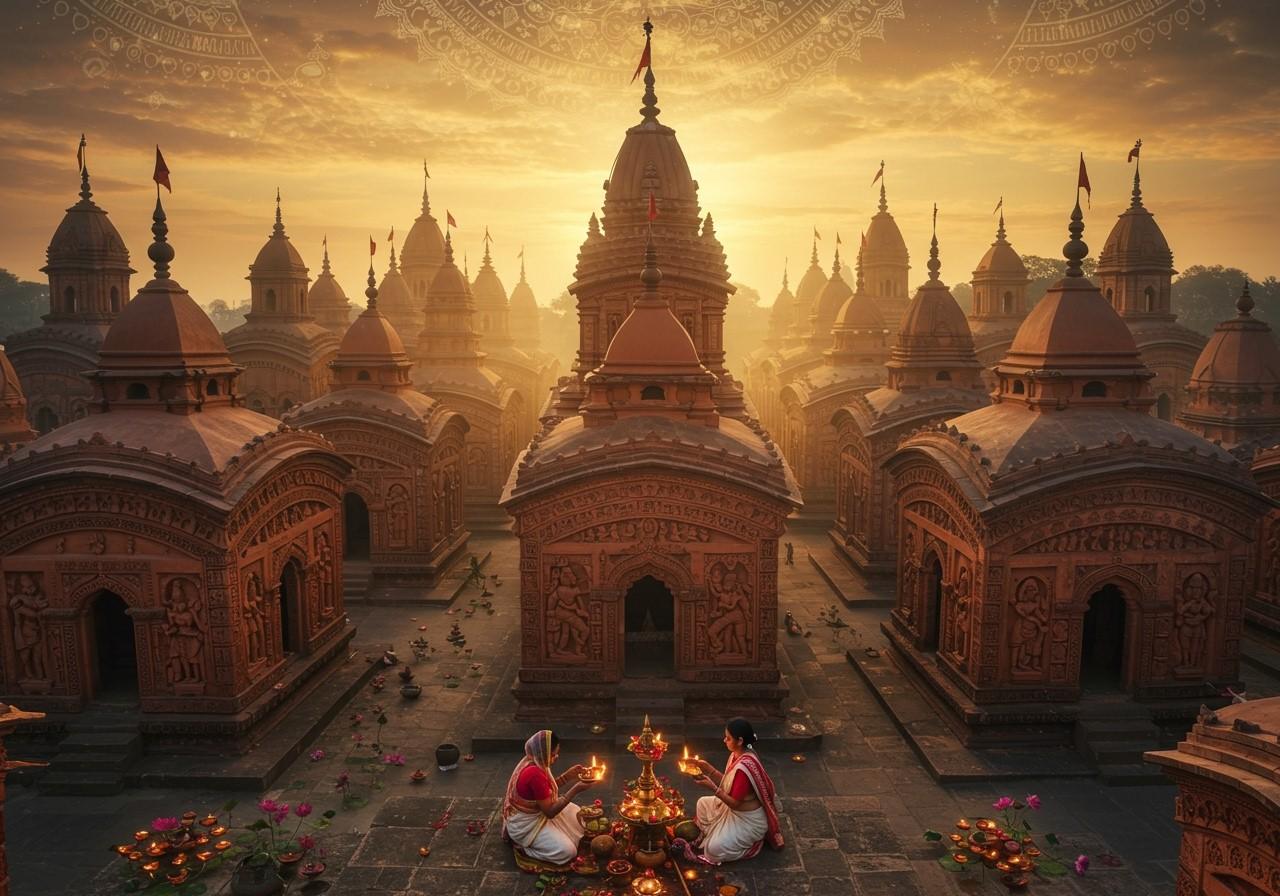
Nestled in the heart of Jharkhand, India, the Maluti Temples stand as a testament to a rich historical and cultural tapestry. This blog delves into the captivating story of these ancient temples, exploring their origins, architectural marvels, cultural significance, and modern-day relevance. Join us as we uncover the fascinating legacy of the Maluti Temples.
A Glimpse into the Past: Historical Background
The Maluti Temples trace their origins back to the 17th-19th centuries, during the reign of the Malla dynasty (also known as the Baj Basanta dynasty). Legend has it that a Brahmin named Basanta, having rescued the hawk of the Muslim ruler Alauddin Husain Shah of Gaura (1495–1525), was granted the kingdom of Maluti, then known as “Nankar Raj” (tax-free kingdom). Consequently, Basanta was bestowed the title “Raja” and became known as Raja Baj Basanta. This dynasty became instrumental in the construction of these temples, shaping the spiritual landscape of the region.
It is believed that the complex once housed 108 temples, a number steeped in symbolism within Hinduism. However, over time, approximately 36 temples have been lost due to natural forces and neglect. This makes the preservation of the remaining structures even more critical.
Architectural Marvels: A Blend of Styles
The Maluti Temples captivate with their intricate terracotta work. These detailed carvings depict scenes from Hindu mythology, offering a glimpse into the rich spiritual beliefs of the region. They also portray scenes from daily life, providing a window into the past. The temples showcase a blend of architectural styles, including the Rekha Deul, Pirha Deul, and elements of the Odia style, demonstrating the confluence of influences that shaped their design. The use of local materials and traditional construction techniques further enhances their unique charm.
Cultural Significance: The Heart of Community
The Maluti Temples remain deeply intertwined with the religious and cultural life of the local community. Festivals such as Durga Puja and Kali Puja are celebrated with great fervor, drawing devotees and visitors alike. These temples also serve as vital centers for promoting local art and craft traditions, particularly terracotta artistry. They play a significant role in preserving local folklore and oral traditions, ensuring the continuity of cultural heritage.
Modern-Day Relevance: Preserving for the Future
Today, the Maluti Temples have become a significant destination for heritage tourism, contributing positively to the local economy. A key challenge lies in balancing development with preservation, a task undertaken by the community with support from governmental and non-governmental organizations. These temples also offer valuable educational and research opportunities for scholars and students interested in history, architecture, and religious studies. Efforts are underway to involve younger generations in preservation activities, fostering a sense of ownership and responsibility for this invaluable heritage.
Plan Your Visit: Experiencing Maluti Temples
The best time to visit the Maluti Temples is during festivals like Durga Puja, when the atmosphere is charged with spiritual energy and cultural vibrancy. The village of Maluti is accessible by road. Consider exploring nearby attractions to enrich your travel experience. Local accommodations offer comfortable stays, allowing you to immerse yourself in the local culture and savor the unique cuisine. Guided tours led by local experts can provide deeper insights into the history and significance of the temples. Remember to respect the sanctity of this cultural heritage site and adhere to safety guidelines.
For a deeper understanding of the history and significance of Maluti Temples, consider exploring related searches like “maluti temples history,” “maluti temple in india,” “maluti terracotta temple,” and “maluti jharkhand terracotta temple.” You can also find information on the location and accessibility of the temples by searching for “maluti temple near me” or “maluti temple address.”
Connect Deeper with Temple Traditions with Poojn.in
Enhance your spiritual journey and connection to temple heritage with Poojn.in, India’s leading online store for puja samagri and other religious items. As you explore the rich history and cultural significance of the Maluti Temples, Poojn.in offers a wide selection of authentic products to support your personal devotion and create a sacred atmosphere in your home.
- Bel malas: Discover beautiful bel malas, crafted with natural beads, perfect for wearing during your visit to the Maluti Temples or for your daily prayers. These malas can enhance your spiritual practice and serve as a reminder of the divine. Available in various sizes and styles to suit your preferences.
- Tulsi malas: Embrace the sacredness of Tulsi with authentic Tulsi malas, ideal for chanting and meditation. These malas, crafted with care and reverence, can deepen your spiritual connection during temple visits or at home. Choose from a variety of designs, including those with Radha lockets.
- Camphor: Create a pure and auspicious atmosphere with high-quality camphor from Poojn.in. Use it during aarti and other rituals to enhance your spiritual practices, both at home and during temple visits. Available in convenient packs.
- Shiva Lingams: For devotees of Lord Shiva, Poojn.in offers a selection of Shiva Lingams crafted from marble dust, perfect for personal worship and creating a sacred space in your home. These lingams are available in various sizes and designs.
Poojn.in provides a convenient and reliable platform to acquire authentic puja items, ensuring that your spiritual practices are supported by high-quality materials. Visit Poojn.in today to explore their extensive collection and enhance your connection to temple traditions.
Conclusion: Embracing the Timeless Legacy
The Maluti Temples stand as a powerful symbol of India’s rich cultural and architectural heritage. They offer a unique opportunity to connect with the past, appreciate the artistry of our ancestors, and support the ongoing efforts to preserve these treasures for future generations. Plan your visit to the Maluti Temples and embark on a journey through time.


